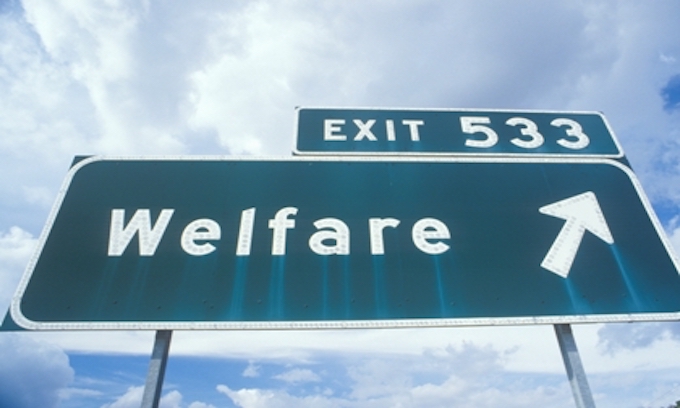A research report revealed that more than half of legal and illegal immigrants living in the United States are receiving some sort of welfare benefits from the government.
The study also divulged that immigrants residing in the U.S. use 57 percent more taxpayer-funded food stamps than Americans who were native-born.
“In September 2015, the Center for Immigration Studies (CIS) published a landmark study of immigration and welfare use, showing that 51 percent of immigrant-headed households used at least one federal welfare program – cash, food, housing or medical care – compared to 30 percent of native households,” CIS reported.
Drain on the economy?
This interprets to nearly $2,000 more in federal money received by immigrant households than native-born families nationwide.
“The average household headed by an immigrant (legal or illegal) costs taxpayers $6,234 in federal welfare benefits, which is 41 percent higher than the $4,431 received by the average native household,” CIS’s Jason Richwine divulged.
In several categories, immigrants are more costly to the American taxpayer than the native-born residents receiving federal aid.
“The average immigrant household consumes 33 percent more cash welfare, 57 percent more food assistance, and 44 percent more Medicaid dollars than the average native household,” Richwine added. “Housing costs are about the same for both groups.”
It was shown that immigrants from Panama all the way up to the southern border of the U.S. cost American taxpayers more than migrants from any other part of the world.
“At $8,251, households headed by immigrants from Central America and Mexico have the highest welfare costs of any sending region – 86 percent higher than the costs of native households,” CIS’s Richwine revealed.
A comparison between illegal aliens and legal immigrants was also made.
“Illegal immigrant households cost an average of $5,692 – driven largely by the presence of U.S.-born children – while legal immigrant households cost $6,378,” CIS’s report stated.
Low levels of education and poor performance at school are to blame for immigrants eating up such a large proportion of America’s welfare dollars.
“The greater consumption of welfare dollars by immigrants can be explained in large part by their lower level of education and larger number of children compared to natives,” Richwine pointed out. “Over 24 percent of immigrant households are headed by a high school dropout – compared to just 8 percent of native households. In addition, 13 percent of immigrant households have three or more children, vs. just 6 percent of native households.”
Immigrants an asset or a burden?
CIS Director of Research Steven A. Camarota indicated that the study flies in the face of what many politicians proclaim – that immigration strengthens and boosts the nation.
“[If one] assumes that immigration is supposed to benefit the country, then immigrant welfare use should be much lower than natives,” Camarota pointed out, according to WND.
This proves not to be the case, as pointed out by the “Survey of Income and Program Participation” conducted by the government.
“[T]wo decades after welfare reform tried to curtail immigrant eligibility, immigrant-headed households are using welfare at much higher rates than native households for most programs,” the government study explained, according to WND.
It was also stressed that the restrictions do not apply to most immigrants, while there are numerous exceptions that allow the immigrant population access to the welfare system’s plethora of benefits.
“[Camarota] said immigrants often receive benefits on behalf of their U.S.-born children,” WND noted.
After a hard look at the statistics, it appears that President Donald Trump’s tough-on-immigration policies – including limiting the number of migrants and building a secure and continuous border wall along the U.S.’s southern border – will resonate with more and more American voters.
“The findings of this analysis have important policy implications,” Camarota impressed. “Perhaps most important, the significantly higher welfare use associated with immigrants means that it is very likely immigration is a drain on public coffers – exacerbating the nation’s fiscal deficit.”
GOP recognizing and handling the problem
After Trump announced his support for a merit-based immigration reform bill last August, other Republican leaders have rallied behind him concerning limiting legal immigration – emphasizing that a large proportion of those entering the U.S. end up draining America’s welfare system.
Sen. David Perdue (R-.Ga.) and Sen. Tom Cotton (R-Ark.) emphasized how taking in masses of immigrants can burden the American economy.
“The majority come here on family-based visas, without regard to their skills or our needs,” Perdue and Cotton wrote in an August 2017 op-ed in USA Today. “As a result, half of all immigrant households receive benefits from our social welfare system.”
Both are on board with Trump’s agenda to get America’s economy back on track by curbing immigration.
“Perdue and Cotton sponsored the Reforming American Immigration for a Strong Economy Act – or RAISE Act – which President Donald Trump has endorsed,” Politifact.com reported. “[In 2017], the country accepted about 1 million new immigrants a year.”
Migration Policy Institute Director of Communications Michelle Mittelstadt said that America’s school lunch programs should also be taken into account when looking at immigrants’ federal assistance, because such programs are not traditionally considered welfare.
“It’s a nutrition program, and does not have the same work, citizenship or other requirements that actual welfare programs do,” Mittelstadt said, according to Politifact.com. “And it’s not always means-tested, as, for example, some schools in low-income areas provide free or reduced lunches to all students.”
It was noted that even though school lunches add to the burden, it does not represent a substantial proportion of immigrants’ drain on the system.
“But excluding school lunch recipients doesn’t change the numbers that much,” Politifact.com’s Miriam Valverde noted. “Camarota in his study said that if subsidized school lunch was excluded from the equation, welfare use for immigrant households would be 46 percent – compared with 28 percent for native households. That’s only slightly lower than Perdue’s claim that about ‘half’ of immigrant households receive welfare benefits.”
Another study mirrored CIS’s findings.
“The National Academies report found similar numbers of about 45 percent when looking at various public benefits,” Valverde recounted. “It examined benefits used by immigrant and U.S.-born households – both with children. The report found that ‘cash assistance’ – such as SSI and TANF – was low for both sets of households [at] around 6 percent.”
Mittelstadt explained further what exactly is meant by cash benefits received immigrants.
“Cash assistance is what we generally think of as ‘welfare’ for households with children in which the adults cannot work or have difficulty finding jobs,” she explained.
The immigration expert stressed that the largest drain on the welfare system by immigrants – compared to native-born families tapping into federal assistance – comes from paying for their food and health care.
“But food assistance and Medicaid participation was much higher for immigrant households than for U.S.-born households, [Mittelstadt] said,” Valverde continued. “About 45 percent of immigrant households had food assistance and 46 percent Medicaid, according to the report.”
—-
Copyright American Family News. Reprinted with permission.




















Recent Comments